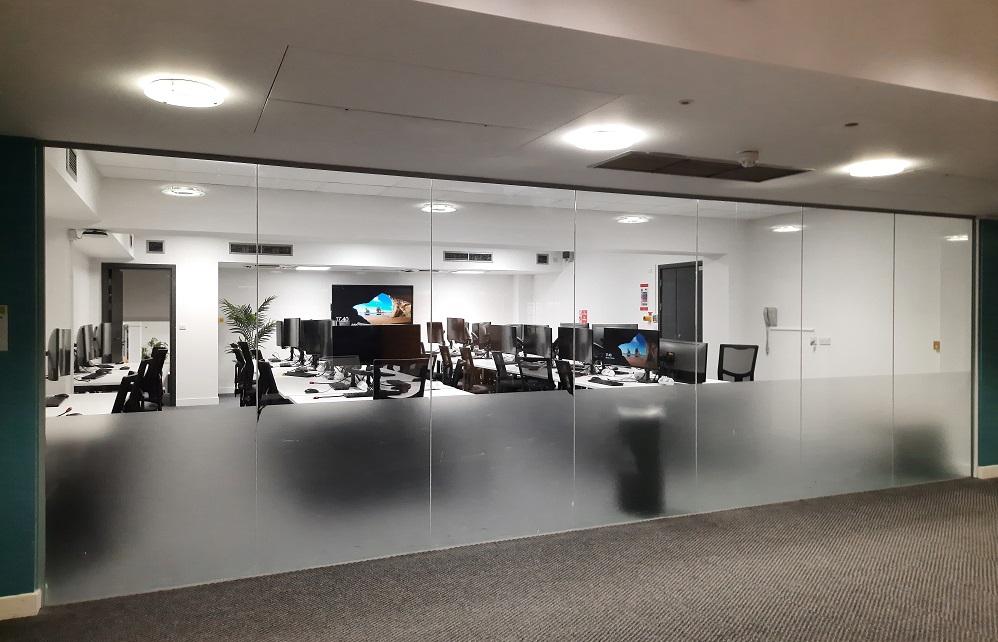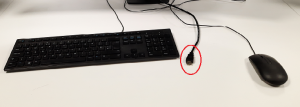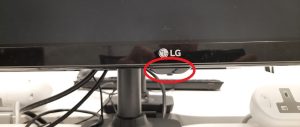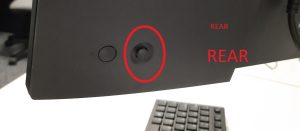
There are three CS labs located within the Malet Place Engineering Building (MPEB) and one at 169 Euston Road.
All the MPEB computer labs require a code to unlock the door. Please contact us for this code.
Lab 1.21 has 30 machines with 32GB RAM and an RTX 4070 Super Ti.
Lab 1.05 has 24 machines with 128 GB RAM and RTX 3090.
Lab 4.06 is a bring your own device lab which has additional displays, desk space, and wired/wireless access.
The Bloomberg Lab is located at the Euston road site and only available to Financial Computing students.
Lab opening times are from 8:00am to 7:00pm weekdays.
Please see the Lab Status page for updates on individual machines.
All our lab PCs require a Computer Science username and password to login (this is different to your UCL login details and usually resembles your name). New students are given these at the start of the academic year. If you join CS later you will need to contact the Helpdesk to get your account details.
The PCs dual boot into both Linux and Windows operating systems as well as giving access to CS computing services. For further details select the Linux and Windows headings above. The lab PCs regularly reboot on Monday and Thursday evenings between 7.30pm and midnight.
The labs are used to support the CS teaching curriculum and are booked for classes and workshops. To plan your usage open the MPEB Labs Timetable 23-24 to see the current bookings.
The lab machines boot into Linux by default and can potentially be accessed remotely. However please note that the PCs regularly reboot on Monday and Thursday evenings between 7.30pm and midnight. These PCs are also used by others and may be rebooted at any time. If you wish to run a long compute job on a lab PC a good option would be to run the job overnight, excluding Monday and Thursday evenings, or at the weekend. Other options for running long GPU jobs are detailed here.
Remotely Accessing Lab GPUs
To access a lab machine remotely you will need to login via SSH. If you are connected to the CS network then you can SSH directly to the machine of your choosing.
If you are not on the CS network you will need to log into thinlinc, open a terminal, and ssh to a GPU host. Alternatively, ssh into our gateway knuckles.cs.ucl.ac.uk and then ssh on to a GPU host.
You can also do this with one command:
ssh -l <username> -J <username>@knuckles.cs.ucl.ac.uk <gpu_hostname>
(replacing <username> with your CS username and <gpu_hostname> with the name of the CS machine you wish to connect to. For example, canada-l).
Please refer to the Windows Labs FAQ for further details on how to best use these PCs. Topics include installing apps, using Anaconda python and accessing Linux remotely.
The Linux environment offers the standard packages and libraries that come with Rocky 9 and additional packages such as conda python with tensorflow for GPU coding and Singularity for docker images.
Each lab has a printer and these are named after the printer location. These are:
- cps105
- cps121
- cps405
Printing is free within the CS labs but you are allocated a termly quota. Contact the Helpdesk for more quota or to report printing problems.
The labs are used for both teaching the departments curriculum and also for short courses and workshops. The Linux and Windows environments are configured for CS curriculum teaching. If you require additional software not currently installed please email request@cs.ucl.ac.uk with your requirements at least two weeks prior to your teaching.
Some examples of previous lab usage:
- robotics – purpose built robots for undergraduate teaching
- arduino – workshops aimed at school children in arduino programming
- security – pre-built virtual machines loaded onto lab machines used for curriculum teaching
- python – tensorflow environment with GPU resources for machine learning
All the labs have access to both Eduroam and CS wireless networks. The CS network will give you access to both CS services and UCL central services whereas the Eduroam network will give you access to UCL central services only. To access the CS wireless network you need to register the MAC address of your wireless adapter here.
In addition there are on desk network sockets in 4.06 so you can plug in your laptop and gain ethernet access to the CS student network. You must register the MAC address of your laptops wired ethernet adapter to use these sockets. If you require an ethernet cable please come to room 4.20 MPEB.
There are on desk power sockets for laptop and device charging and all the displays have an additional HDMI connection to allow laptop connectivity. Simply connect your laptop to the on desk HDMI cable and select HDMI 2 as the source port. If your laptop has a USB-c display port you will need a USB-c to HDMI adapter.

To set the source port you will need to access the menu button on the display. This button is located in different positions depending upon the screen.
On the Dell wide screens the menu buttons are located under the right side of the display.

On the LG ultra wide screens the menu button is positioned centrally on the under side of the display.

On the 28 inch Dell screens the menu button is located on the rear of the display.

There are various resources available to facilitate student project work which includes specialist hardware devices, dedicated computers and virtual machines. Hardware requirements for student projects must come from your academic supervisor prior to project commencement.
You can also request a virtual machine to facilitate your studies or project work. See Apply for a VM for more details
